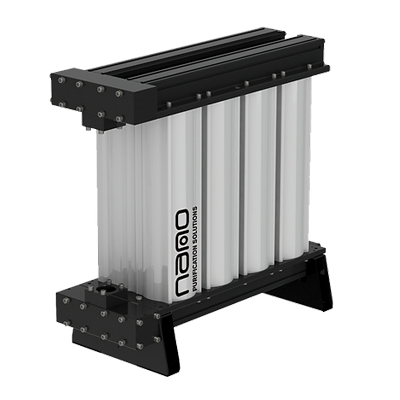Condensate Treatment Solutions
Compressed air systems produce condensate containing oil, water, and other contaminants from the air and compressor lubricants. Discharging untreated condensate into sewer systems or the environment can violate regulations like the Clean Water Act. Condensate treatment systems use separation, filtration, and adsorption technologies to purify condensate, allowing safe disposal or reuse while minimizing environmental impact and ensuring compliance.
Applications
- Manufacturing: Treats condensate from compressed air systems used in assembly lines and machinery to meet environmental standards.
- Food Processing: Ensures condensate is free of oil and contaminants for safe disposal in hygiene-sensitive environments.
- Automotive: Purifies condensate from air systems used in painting and assembly to comply with environmental regulations.
Oil-Vapor Filtration
High-Efficiency Separation
- Removes Oil from Condensate
- Compact and Easy to Maintain
- Meets Environmental Standards

Condensate Drain
Advanced Treatment
- Handles Complex Emulsions
- High Contaminant Removal Rate
- Suitable for Heavy-Duty Applications
The Process of Condensate Treatment
The condensate treatment process typically involves:
- Separation Stage: Separates oil from water using gravity or coalescing media, collecting oil for disposal.
- Filtration Stage: Removes residual contaminants and particulates to ensure clean water output.
- Treatment Equipment: Includes oil-water separators, filtration units, and adsorption systems for efficient condensate management.
Types of Condensate Treatment
Oil-Water Separation
- Gravity-Based Separators: Use density differences to separate oil and water, ideal for high-volume applications.
- Coalescing Separators: Employ media to merge small oil droplets into larger ones for easier removal.
Emulsion Treatment
- Emulsion Separators: Break down stable oil-water emulsions using advanced filtration and chemical processes.
- Adsorption Systems: Use activated carbon or other media to remove trace oils and contaminants from condensate.
The Role of Condensate Treatment in Industry
Untreated condensate can harm the environment and lead to regulatory fines. Condensate treatment systems address these issues by:
- Function: Removing oil and contaminants from condensate to produce clean water safe for disposal or reuse.
- Benefits in Industry:
- Environmental Compliance: Ensures adherence to regulations like the Clean Water Act, avoiding penalties.
- Cost Savings: Reduces disposal costs by treating condensate on-site and enabling water reuse.
- Sustainability: Minimizes environmental impact by preventing oil contamination of water systems.
Condensate treatment systems are available in various configurations, from compact units for small operations to robust systems for large industrial facilities, tailored to condensate volume and contamination levels.


